Abstract
A group of peptides (some or all of them glycopeptides), of molecular weight about 5000, has been shown to be a major fraction of biological membranes. These „miniproteins” have been prepared from membranes of human and bovine red blood cells, from purified bovine liver mitochondria, and from the rhodopsin-containing membranes of the outer segments of bovine retinal rods. While the miniproteins were found in large amounts in each case, the other protein components differed markedly depending on the function of the membrane studied. This fact was particularly clear in the case of the rod membranes where the only major proteins detected were the miniproteins and rhodopsin. The large size of the miniprotein fraction in each of these membranes leads us to propose that the miniproteins play a fundamental role in the several functions which occur as common denominators in biological membranes.
Full text
PDF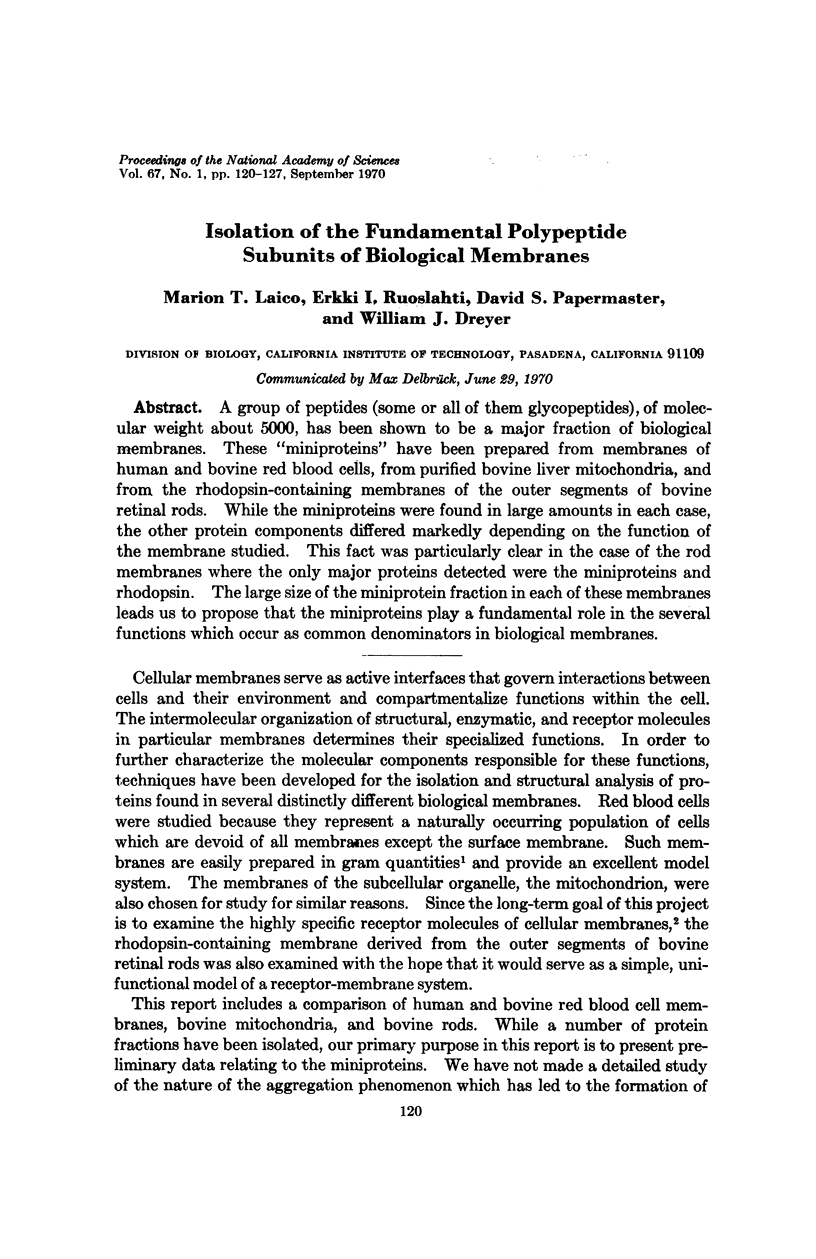
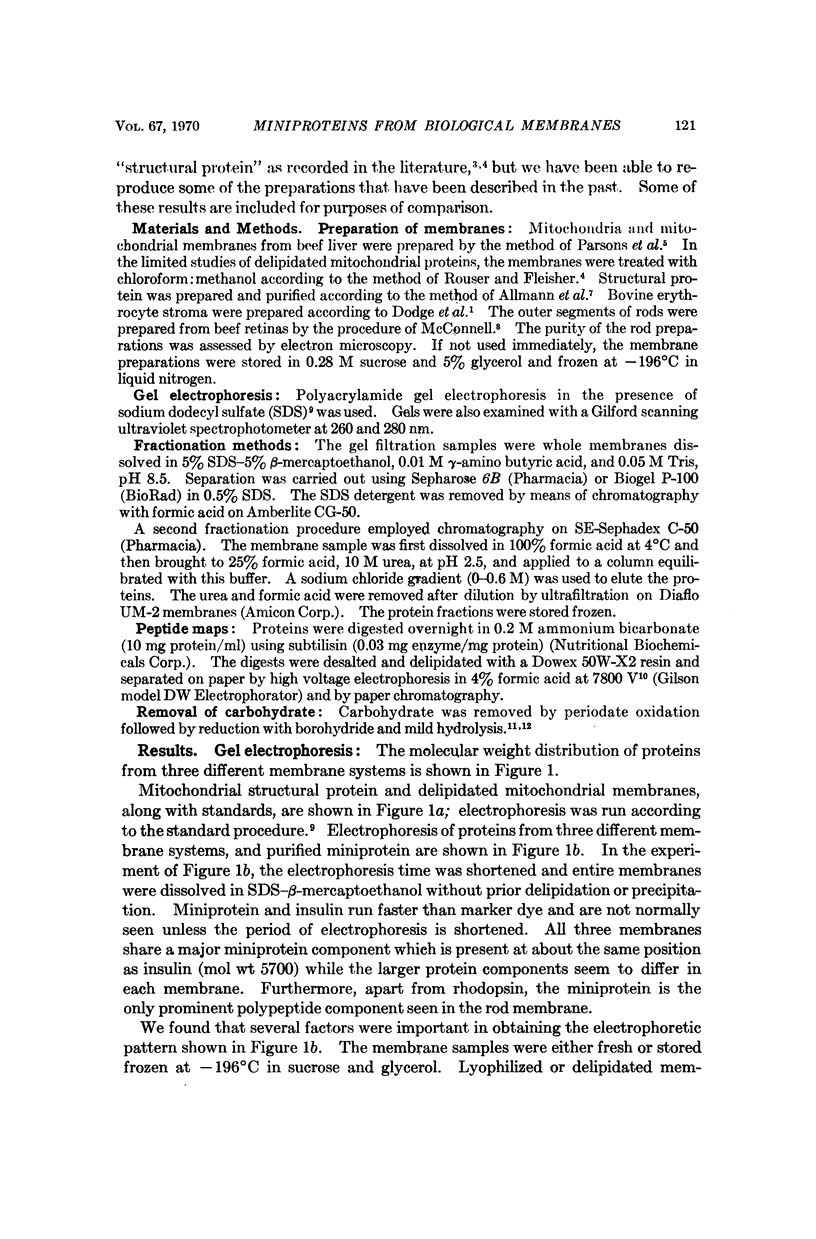
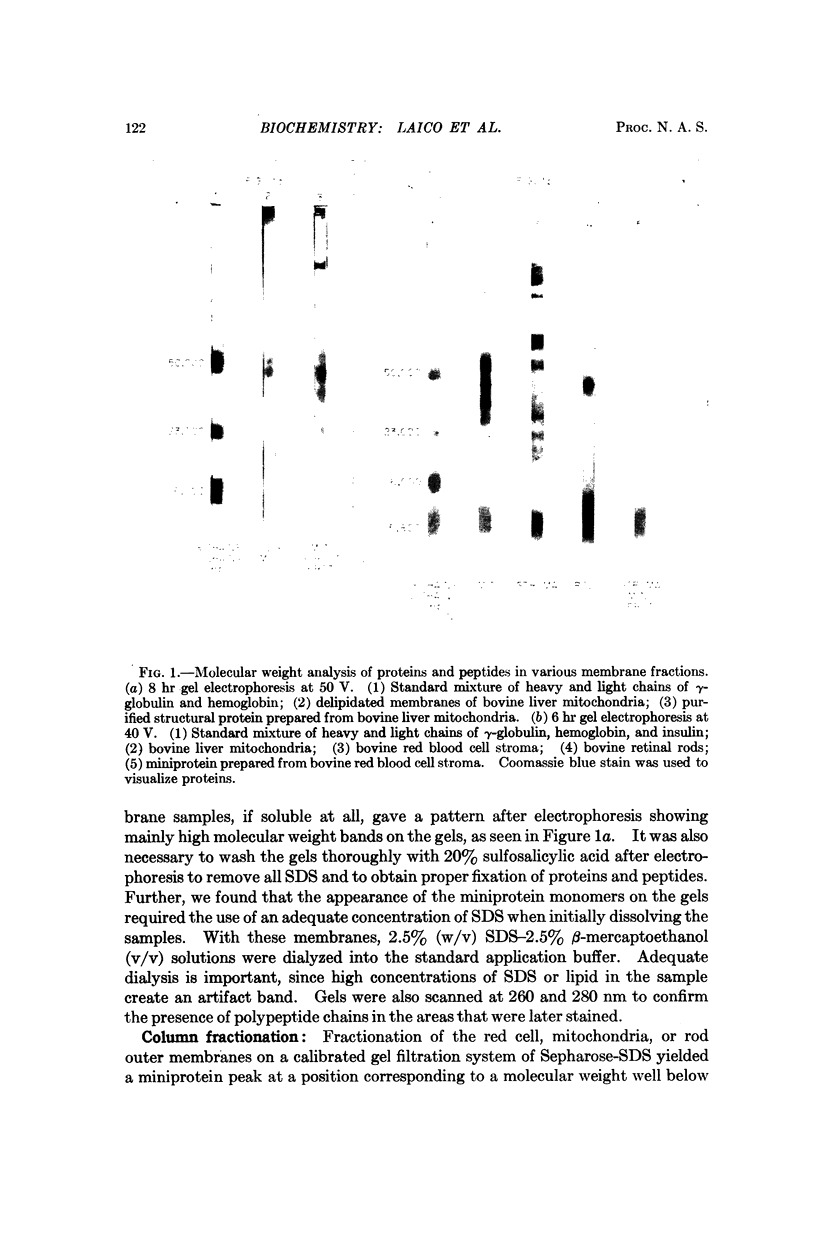
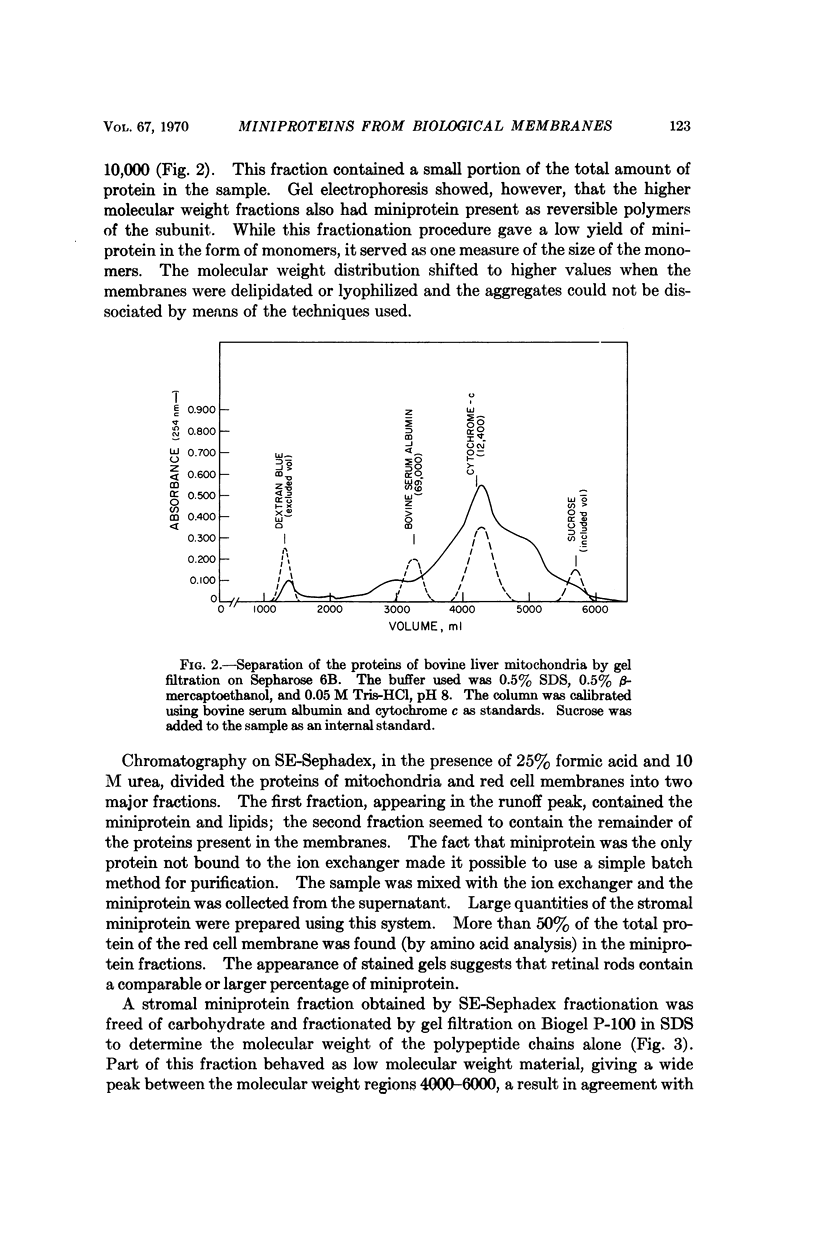
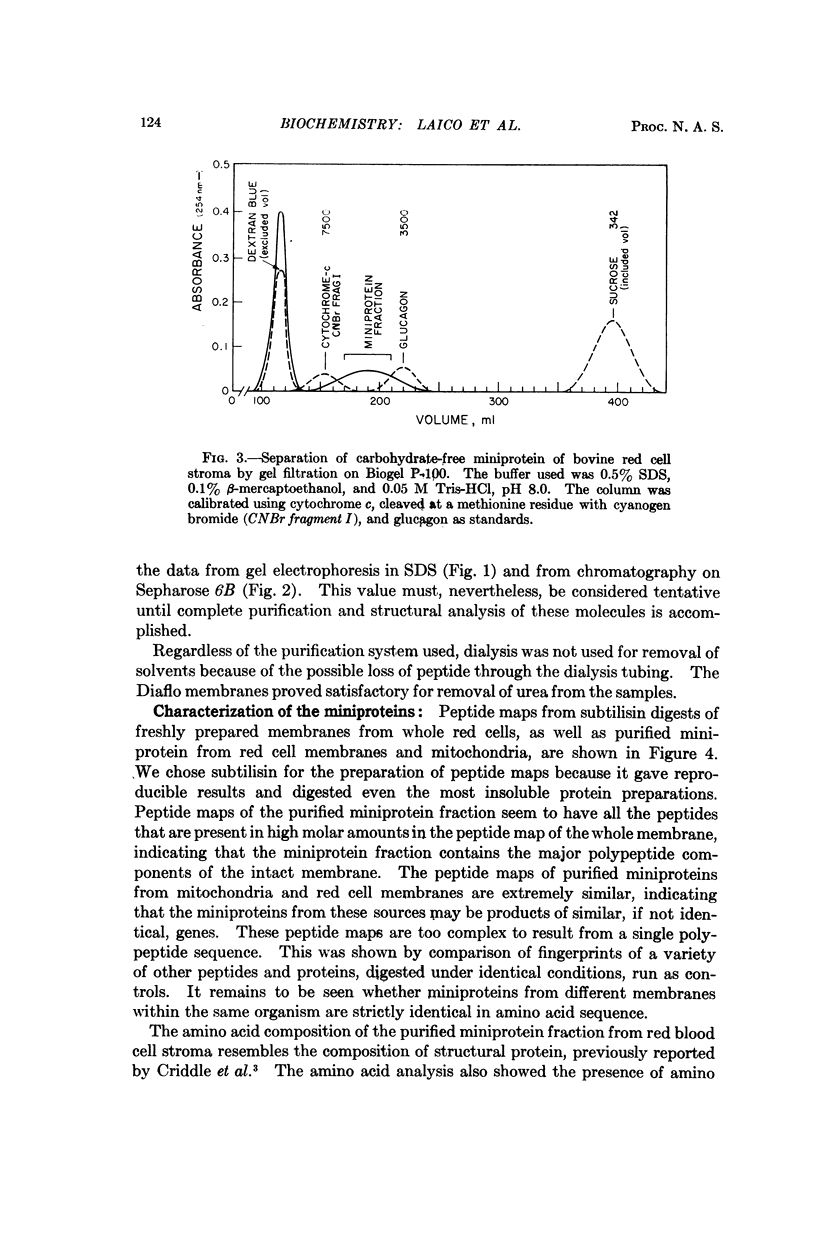
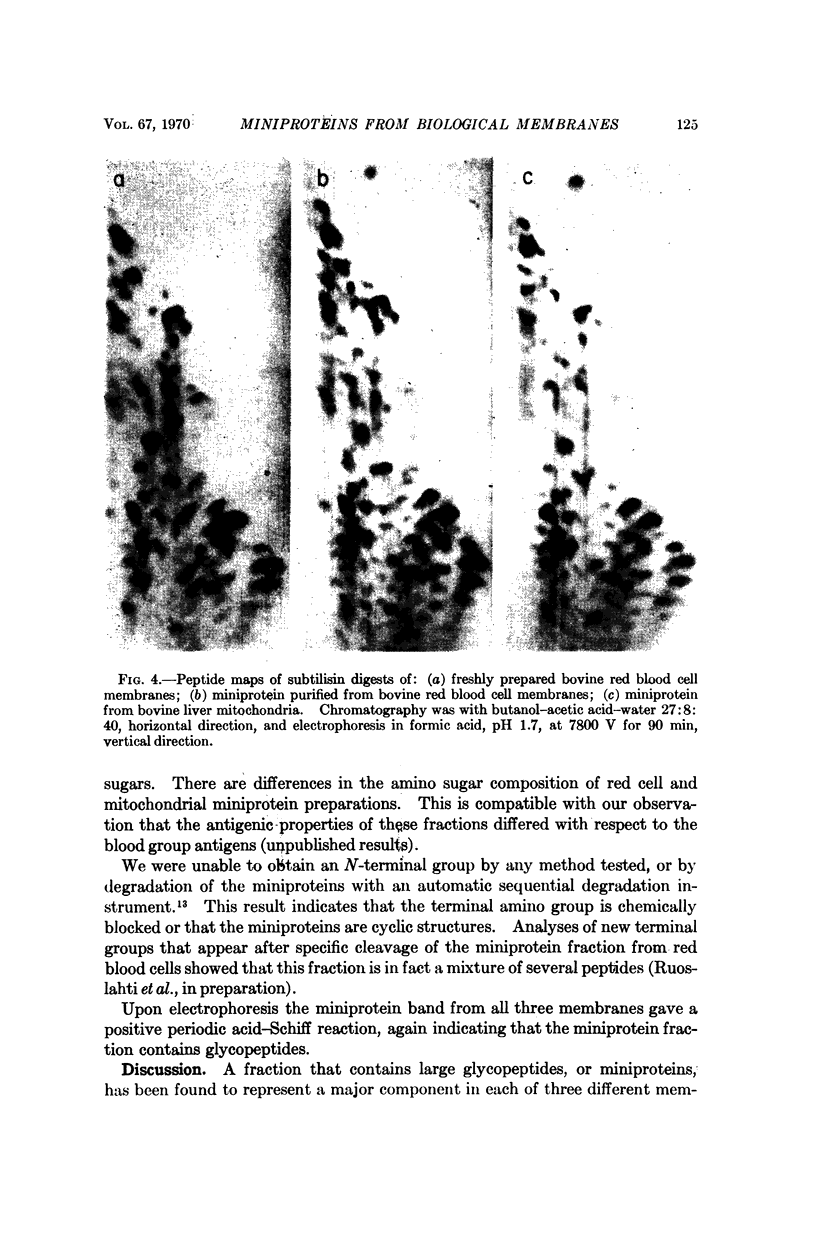
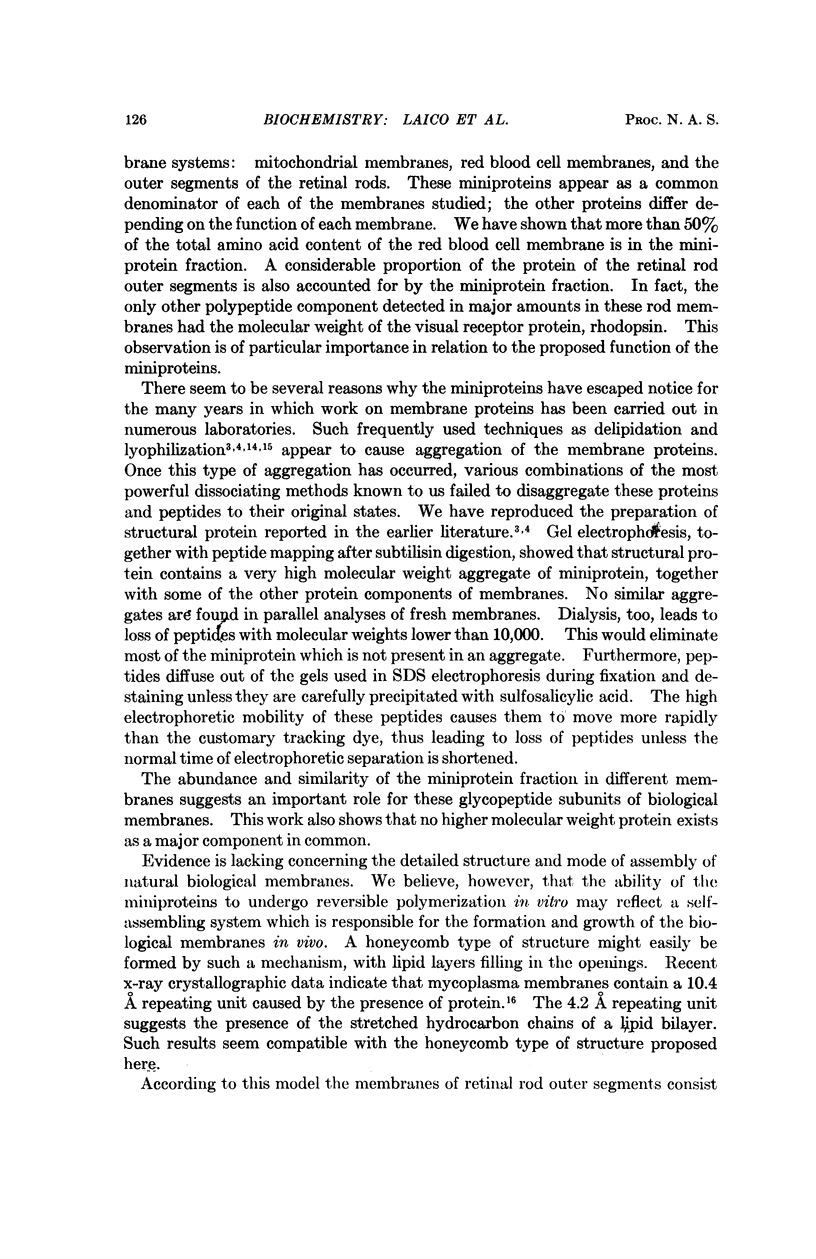
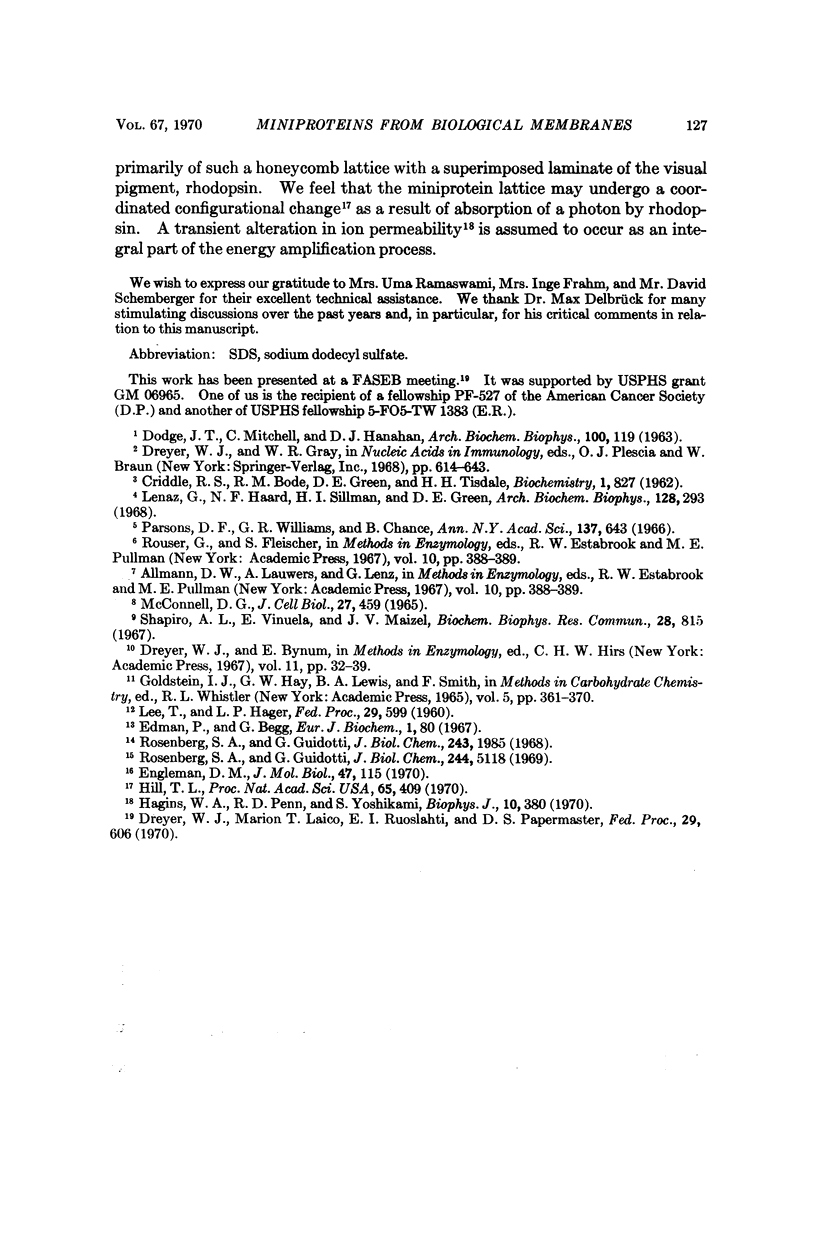
Images in this article
Selected References
These references are in PubMed. This may not be the complete list of references from this article.
- CRIDDLE R. S., BOCK R. M., GREEN D. E., TISDALE H. Physical characteristics of proteins of the electron transfer system and interpretation of the structure of the mitochondrion. Biochemistry. 1962 Sep;1:827–842. doi: 10.1021/bi00911a015. [DOI] [PubMed] [Google Scholar]
- DODGE J. T., MITCHELL C., HANAHAN D. J. The preparation and chemical characteristics of hemoglobin-free ghosts of human erythrocytes. Arch Biochem Biophys. 1963 Jan;100:119–130. doi: 10.1016/0003-9861(63)90042-0. [DOI] [PubMed] [Google Scholar]
- Edman P., Begg G. A protein sequenator. Eur J Biochem. 1967 Mar;1(1):80–91. doi: 10.1007/978-3-662-25813-2_14. [DOI] [PubMed] [Google Scholar]
- Engelman D. M. X-ray diffraction studies of phase transitions in the membrane of Mycoplasma laidlawii. J Mol Biol. 1970 Jan 14;47(1):115–117. doi: 10.1016/0022-2836(70)90407-9. [DOI] [PubMed] [Google Scholar]
- Hagins W. A., Penn R. D., Yoshikami S. Dark current and photocurrent in retinal rods. Biophys J. 1970 May;10(5):380–412. doi: 10.1016/S0006-3495(70)86308-1. [DOI] [PMC free article] [PubMed] [Google Scholar]
- Hill T. L. Analysis of a model for active transport. Proc Natl Acad Sci U S A. 1970 Feb;65(2):409–416. doi: 10.1073/pnas.65.2.409. [DOI] [PMC free article] [PubMed] [Google Scholar]
- Lenaz G., Haard N. F., Silman H. I., Green D. E. Studies on mitochondrial structural protein. 3. Physical characterization of the structural proteins of beef heart and beef liver mitochondria. Arch Biochem Biophys. 1968 Nov;128(2):293–303. doi: 10.1016/0003-9861(68)90035-0. [DOI] [PubMed] [Google Scholar]
- Parsons D. F., Williams G. R., Chance B. Characteristics of isolated and purified preparations of the outer and inner membranes of mitochondria. Ann N Y Acad Sci. 1966 Jul 14;137(2):643–666. doi: 10.1111/j.1749-6632.1966.tb50188.x. [DOI] [PubMed] [Google Scholar]
- Rosenberg S. A., Guidotti G. Fractionation of the protein components of human erythrocyte membranes. J Biol Chem. 1969 Oct 10;244(19):5118–5124. [PubMed] [Google Scholar]
- Rosenberg S. A., Guidotti G. The protein of human erythrocyte membranes. I. Preparation, solubilization, and partial characterization. J Biol Chem. 1968 Apr 25;243(8):1985–1992. [PubMed] [Google Scholar]
- Shapiro A. L., Viñuela E., Maizel J. V., Jr Molecular weight estimation of polypeptide chains by electrophoresis in SDS-polyacrylamide gels. Biochem Biophys Res Commun. 1967 Sep 7;28(5):815–820. doi: 10.1016/0006-291x(67)90391-9. [DOI] [PubMed] [Google Scholar]




